Climate Variations
Our journey through Australia will take us from equatorial to tropical to subtropical to temperate climate zones. All this variation, however, does not capture all the micro-climates we will experience as we move from sea level to 1000 meters in elevation, from flat lying country to mountainous terrain (and even caves!), from open desert to canopy rainforest. Of our destinations, Litchfield National Park, NT has the warmest mean maximum June/July temperature of 33°C (86°F) and Katoomba, NSW has the coolest mean minimum June/July temperature at 3°C (37°F). So we are going to experience quite a range of temperatures throughout our stay. Click on the climate graphs to learn more about average monthly temperatures and precipitation rates for our destinations.
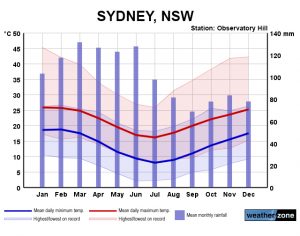 |
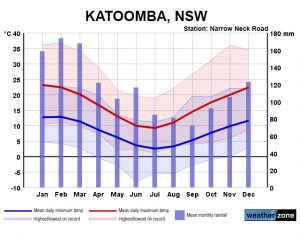 |
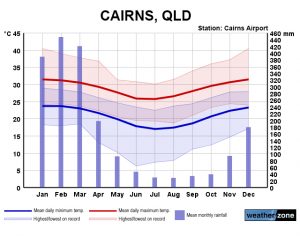 |
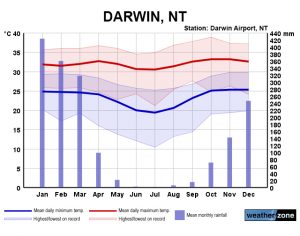 |
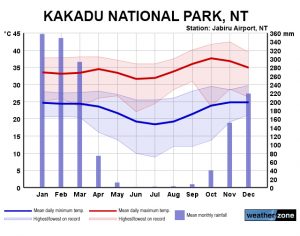 |
 |
Click on the Graphs above for details. From www.farmonlineweather.com.au
Clothing: Be PreparedThe trick is not to bring your entire winter and summer wardrobe. Instead, make use of layering. Jeans or slacks quickly become cold-weather proof with a nice pair of long thermal underwear. A thermal long-sleeve, fleece, and wind-breaking outer shell, will keep out the cold without sacrificing the ability to lose layers if the day warms up. A nice stretchy material (wool, cotton, etc.) hat and one-size-fits-all gloves round out the picture on a brisk day (and don’t take up much room in your luggage). We will be both by the ocean and on exposed mountain trails where it can be really windy – so make sure whatever hat you bring, it won’t easily blow away. I would bring TWO hats, one for warm sunny days (with wide rim to protect against the sun) and a warm one for cold, windy days.
